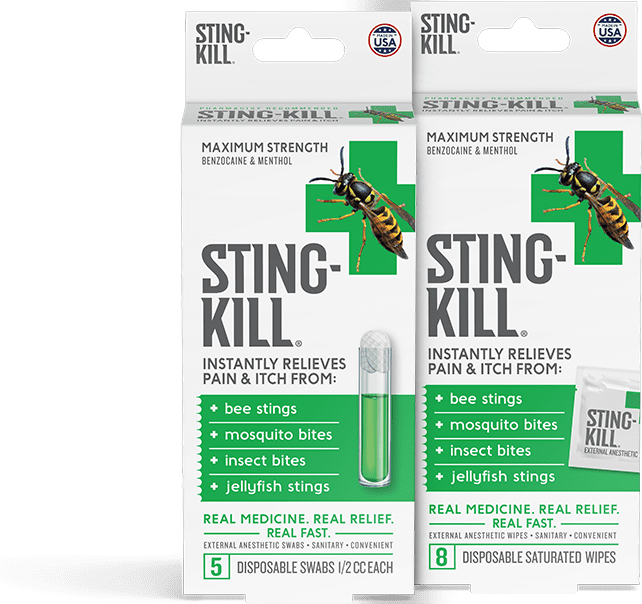

For severe allergic reactions, an epinephrine shot is essential to treating anaphylaxis: Nicolazzo has saved more lives (four) with an EpiPen than with anything else. Remove stinger by scraping a credit card across it (tweezers can cause more venom to be released) wash the sting site, apply cool compresses, and give patient an antihistamine. (Photo: SolStock via Getty Images) Beware of Bee StingsĮspecially in spring with the bloom of wildflowers, bee stings are a very common hiking injury. You can get tetanus from dust, manure, or soil in the backcountry. Wounds don't come in predetermined shapes and sizes, so why should bandages? Instead, Nicolazzo packs a roll of sterile gauze and flexible medical tape to custom-fit a dressing of any dimensions on the fly.īe sure to clean dirt and soil out of your wounds if you get cut. Pat dry and cover with a petroleum jelly-treated gauze bandage. Flush using bursts of clean water from a sports bottle or plastic bag with a clipped corner.
#BEE STING TREATMENT SAN DIEGO CA SKIN#
Reduce infection risk by cleaning cuts like a pro: Apply pressure to stop bleeding, then wash skin around the gash with soap and water. (And be sure to clean under your fingernails, too.) Scrub with soap and water for at least 20 seconds after bathroom breaks and before handling food to prevent the spread of nasty bugs. That doesn’t mean just pulling out the Purell: Sanitizer doesn't eliminate germs as effectively as washing, especially when hands are visibly dirty. Clean and Treat Your Woundsīefore addressing your bumps and scrapes, clean your hands. Warm patient as stated above and seek medical help. Warm the patient with sleeping bags, hot drinks, fire, and your body heat.īelow 90: Moderate to severe hypothermia. Stop exercise and cool patient as stated above give sips of water.ĩ0 to 95: Mild hypothermia. Even a fluctuation of a couple degrees can mean major medical issues.ġ04 and up: Heat stroke: Stop exercise, cool patient by immersing or misting, and seek medical help.ġ00 to 103: Heat exhaustion possible. The average core body temperature is 98.6degF, but if you stray too far above or below your natural equilibrium, your body can’t perform adequately. Nicolazzo says that the person who’s struggling to keep up with more advanced fellow hikers (and doesn’t want to admit that he’s in over his head) is the person most likely to get hurt: “Know what your limitations are.” Keep Warm and Cool The key to avoiding many of these injuries and accidents is prioritizing smart, ego-free hiking.


 0 kommentar(er)
0 kommentar(er)
